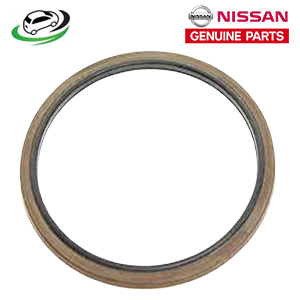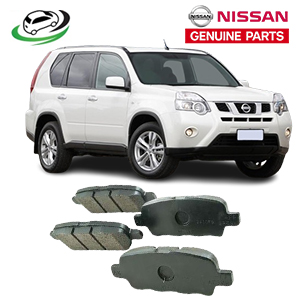-11%
Get Nissan X-Trail T31 Genuine Rear Brake Pad Kit D4060JA00J
The rear brake pad kit is a crucial component of a vehicle’s braking system, designed to provide optimal braking performance, safety, and control. Genuine rear brake pads refer to components manufactured to meet or exceed the original equipment manufacturer (OEM) specifications. This article explores the significance of genuine rear brake pad kits, their components, benefits, maintenance tips, and installation procedures.
Understanding the Brake System
To appreciate the importance of genuine rear brake pad kits, it’s essential to understand how a vehicle’s braking system works. The braking system consists of several key components, including:
- Brake Pads: These are friction materials pressed against the brake rotor to slow down or stop the vehicle. The pads convert kinetic energy into thermal energy through friction.
- Brake Rotors: The rotors are metal discs that the brake pads clamp down on to create friction. They help dissipate heat generated during braking.
- Calipers: Calipers house the brake pads and contain hydraulic pistons that press the pads against the rotors when the brake pedal is applied.
- Brake Lines: These are hydraulic lines that transport brake fluid from the master cylinder to the calipers, allowing the braking system to function.
- Master Cylinder: The master cylinder generates hydraulic pressure when the brake pedal is pressed, sending brake fluid to the calipers.
In most vehicles, the rear brake system can be either disc or drum brakes, but disc brakes are more common in modern vehicles. Understanding these components helps highlight the role of the rear brake pad kit.
Components of a Genuine Rear Brake Pad Kit
A genuine rear brake pad kit typically includes the following components:
- Brake Pads: The primary component, made from friction materials like organic, semi-metallic, or ceramic compounds, specifically engineered to ensure optimal performance and longevity.
- Shims: These are thin layers that help reduce noise and vibration, providing a smoother braking experience. They can also help with heat dissipation.
- Backing Plates: These provide structural support to the brake pads and help maintain their position within the caliper. They are typically made of metal and are designed to withstand high temperatures.
- Wear Indicators: Some brake pad kits come with wear indicators, which are metal strips that produce a squealing noise when the pads are worn down, alerting the driver to replace them.
- Installation Hardware: This may include bolts, clips, and springs necessary for proper installation of the brake pads.
Benefits of Using Genuine Rear Brake Pad Kits
Opting for genuine rear brake pad kits offers several advantages over aftermarket alternatives. Here are some key benefits:
- Quality and Performance: Genuine brake pads are engineered to meet the exact specifications of the vehicle manufacturer, ensuring they perform optimally under various driving conditions. This results in more effective braking and enhanced safety.
- Longer Lifespan: Genuine brake pads typically have a longer lifespan compared to aftermarket options. They are designed with high-quality materials that withstand wear and tear, reducing the frequency of replacements.
- Enhanced Safety: Genuine brake pads are rigorously tested to ensure they provide consistent and reliable stopping power. This is crucial for maintaining safety, particularly during emergency braking situations.
- Reduced Noise and Vibration: Genuine brake pads often come with integrated shims and wear indicators, which help reduce noise and vibrations during braking. This leads to a more comfortable driving experience.
- Warranty Protection: Many manufacturers offer warranties on their genuine parts. Using genuine brake pads can help maintain the vehicle’s warranty and provide peace of mind against defects or premature wear.
- Compatibility: Genuine rear brake pad kits are designed specifically for your vehicle’s make and model. This ensures proper fitment and function, preventing potential issues that may arise from using incompatible aftermarket products.
Signs of Worn-Out Rear Brake Pads
Recognizing the signs of worn-out rear brake pads is crucial for maintaining safety and performance. Here are some common indicators that it’s time to replace the rear brake pads:
- Squeaking or Squealing Noises: If you hear high-pitched squeaking or squealing when braking, it often indicates that the brake pads are worn and need replacement. This sound is usually caused by the wear indicator coming into contact with the rotor.
- Grinding Noises: A grinding sound when applying the brakes is a more serious sign that the brake pads have worn down completely, and the metal backing plate is scraping against the rotor. This can lead to rotor damage and should be addressed immediately.
- Vibration or Pulsation: If you feel vibrations or pulsations in the brake pedal while braking, it may indicate uneven wear on the brake pads or warping of the brake rotors.
- Reduced Braking Performance: If you notice that your vehicle takes longer to stop or the brakes feel less responsive, it may be a sign that the brake pads are worn and need replacement.
- Warning Light: Many modern vehicles come equipped with a dashboard warning light that illuminates when there is an issue with the braking system. If this light appears, have the brakes inspected promptly.
- Visual Inspection: Regularly inspecting the brake pads can help identify wear. If the pad material is less than 1/4 inch thick, it’s time to replace them.
Maintenance Tips for Rear Brake Pads
To ensure optimal performance and longevity of your rear brake pads, consider the following maintenance tips:
- Regular Inspections: Have your brake system inspected regularly as part of routine vehicle maintenance. Technicians can assess the condition of the brake pads, rotors, and other components.
- Brake Fluid Maintenance: Ensure that your brake fluid is at the proper level and replace it according to the manufacturer’s recommendations. Old or contaminated brake fluid can affect braking performance.
- Avoid Abrupt Braking: Gentle and gradual braking helps reduce wear on the brake pads and extends their lifespan. Avoid hard stops whenever possible.
- Clean Brake Components: Keeping the brake components clean from dust and debris helps prevent premature wear. When replacing brake pads, clean the calipers and rotors to ensure optimal performance.
- Brake Pad Replacement: Always replace brake pads in pairs (front or rear) to maintain balanced braking performance. Replacing only one side can lead to uneven braking and reduced safety.
- Use Genuine Parts: Whenever possible, use genuine rear brake pad kits and components to ensure quality and compatibility with your vehicle.
Installing a Genuine Rear Brake Pad Kit
Installing a genuine rear brake pad kit can be done as a DIY project if you have the right tools and experience. However, if you’re unsure, it’s best to have a professional perform the installation. Here’s a step-by-step guide for those who wish to tackle the task:
Tools Required:
- Socket set
- Wrench set
- Brake cleaner
- C-clamp or brake pad tool
- Jack and jack stands
- Safety glasses and gloves
Step-by-Step Installation:
- Preparation:
- Park the vehicle on a flat surface, engage the parking brake, and wear safety gear.
- Loosen the lug nuts on the rear wheels slightly, but do not remove them yet.
- Lift the Vehicle:
- Use a jack to lift the vehicle and secure it with jack stands. Remove the rear wheels by fully unscrewing the lug nuts.
- Remove the Caliper:
- Locate the caliper bolts and remove them using the appropriate socket. Gently lift the caliper away from the rotor and secure it with a bungee cord or rope, taking care not to strain the brake line.
- Remove Old Brake Pads:
- Slide out the old brake pads from the caliper bracket. Note their orientation for installing the new pads.
- Compress the Caliper Piston:
- Use a C-clamp or brake pad tool to compress the caliper piston back into the caliper housing. This creates enough space to fit the new, thicker brake pads.
- Install New Brake Pads:
- Place the new genuine brake pads into the caliper bracket in the same orientation as the old ones. Ensure they are seated properly.
- Reinstall the Caliper:
- Carefully position the caliper back over the new brake pads and rotor. Reinsert the caliper bolts and tighten them to the manufacturer’s specifications.
- Reinstall the Wheel:
- Place the wheel back on the hub and hand-tighten the lug nuts. Lower the vehicle and then tighten the lug nuts in a crisscross pattern to ensure even pressure.
- Test the Brakes:
- Before driving, pump the brake pedal several times to ensure the pads are seated properly and the brake fluid is distributed evenly. Test the brakes at low speed to ensure they are functioning correctly.
- Final Inspection:
- After the installation, check for any unusual noises or issues while driving. If everything seems normal, the installation is complete.
Conclusion
A genuine rear brake pad kit is essential for ensuring optimal braking performance, safety, and vehicle control. With components designed to meet OEM specifications, these kits provide superior quality, longevity, and compatibility. Understanding the importance of genuine rear brake pads, recognizing signs of wear, and maintaining the braking system through regular inspections will enhance vehicle safety and performance. By investing in genuine components and performing proper maintenance, drivers can ensure a safe and reliable driving experience.
Follow us on Facebook for more parts.




Reviews
Clear filtersThere are no reviews yet.